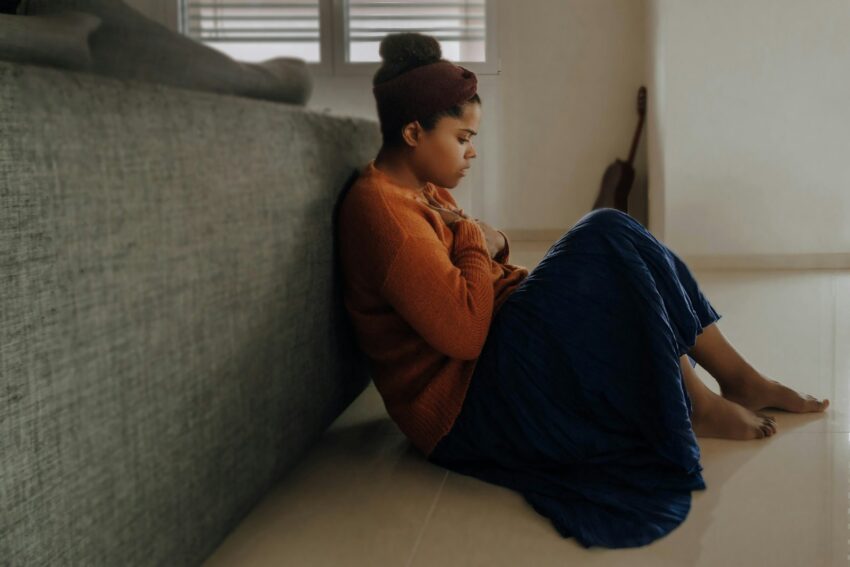Anxiety is a normal part of life. Everyone feels nervous before a big exam, job interview, or important decision. But when anxiety becomes overwhelming, constant, or starts interfering with daily life, it may be more than just stress.

Understanding the symptoms and triggers of anxiety helps people recognize when it is time to seek professional treatment. Early support can make a big difference in managing symptoms and improving quality of life.
How Common Is Anxiety?
Anxiety disorders are the most common mental health conditions worldwide. According to the World Health Organization (WHO), more than 301 million people live with an anxiety disorder【WHO, 2022】. In the United States, the National Institute of Mental Health (NIMH) estimates that about 31% of adults will experience an anxiety disorder at some point in their lives【NIMH, 2022】.
These numbers show that anxiety is not rare—it is something millions of people face every day.
Common Symptoms of Anxiety
Anxiety affects both the mind and body. Symptoms can range from mild uneasiness to severe distress.
Emotional Symptoms
- Excessive worry or fear that feels hard to control
- Irritability or restlessness
- Difficulty concentrating or focusing
- Feeling constantly on edge or “keyed up”
Physical Symptoms
- Rapid heartbeat or palpitations
- Shortness of breath or hyperventilation
- Sweating, trembling, or shaking
- Headaches, stomachaches, or nausea
- Muscle tension or body aches
- Trouble sleeping (insomnia, frequent waking, or restless sleep)
Behavioral Symptoms
- Avoiding situations that may trigger anxiety
- Declining social invitations or withdrawing from others
- Procrastination due to fear of failure or judgment
- Reassurance-seeking behaviors
If these symptoms last for weeks or months and interfere with daily activities, they may signal an anxiety disorder.

Common Triggers of Anxiety
Anxiety can be triggered by many factors. Some are external, while others are linked to internal thought patterns or past experiences.
Stressful Life Events
- Job loss, financial struggles, or academic pressure
- Moving, divorce, or relationship conflicts
- Illness or loss of a loved one
Health Conditions
- Chronic illnesses such as heart disease, diabetes, or thyroid disorders
- Hormonal changes, including those during pregnancy or menopause
Substance Use
- Excess caffeine or energy drinks
- Alcohol, nicotine, or recreational drugs
- Withdrawal from medications or substances
Environmental Factors
- High-stress work environments
- Overexposure to negative news or social media
- Crowded or noisy settings
Personal Vulnerabilities
- Family history of anxiety or other mental health disorders
- Traumatic experiences in childhood or adulthood
- Perfectionism or high self-expectations
Recognizing triggers is an important step toward managing anxiety.
Types of Anxiety Disorders
Anxiety can take different forms. The most common include:
- Generalized Anxiety Disorder (GAD): Persistent, excessive worry about everyday situations.
- Panic Disorder: Sudden, intense episodes of fear with physical symptoms like chest pain or dizziness.
- Social Anxiety Disorder: Intense fear of being judged or embarrassed in social situations.
- Specific Phobias: Strong fear of particular objects or situations, such as heights, spiders, or flying.
- Obsessive-Compulsive Disorder (OCD): Unwanted thoughts (obsessions) and repetitive behaviors (compulsions).
- Post-Traumatic Stress Disorder (PTSD): Anxiety following exposure to trauma.
Each type of anxiety disorder requires tailored treatment and coping strategies.
When Anxiety Becomes a Problem
It can be difficult to know when anxiety moves from normal stress to a disorder. Signs it may be time to seek treatment include:
- Symptoms lasting more than six months
- Anxiety interfering with work, school, or relationships
- Avoiding important situations because of fear
- Physical symptoms becoming severe or persistent
- Reliance on substances (alcohol, drugs) to cope with anxiety
- Panic attacks that feel uncontrollable or frightening
According to the Anxiety & Depression Association of America (ADAA), only about 36% of people with anxiety disorders receive treatment, even though effective options exist【ADAA, 2020】.
Treatment Options for Anxiety
Anxiety is treatable, and many people see significant improvement with professional support.
1. Psychotherapy
- Cognitive Behavioral Therapy (CBT): Helps identify and challenge negative thought patterns.
- Exposure Therapy: Gradually exposes individuals to feared situations to reduce avoidance.
- Acceptance and Commitment Therapy (ACT): Teaches mindfulness and acceptance of anxious feelings.
2. Medication
Doctors may prescribe medications such as:
- SSRIs (Selective Serotonin Reuptake Inhibitors): Often the first line of treatment.
- SNRIs (Serotonin-Norepinephrine Reuptake Inhibitors): Effective for anxiety and depression.
- Benzodiazepines: Used short-term for severe symptoms but carry risk of dependence.
3. Lifestyle Approaches
- Exercise: Regular movement lowers stress hormones and boosts mood.
- Nutrition: Balanced diets rich in omega-3s, whole grains, and vegetables support brain health.
- Sleep: Prioritizing consistent rest strengthens resilience to stress.
- Mindfulness and Relaxation Techniques: Breathing exercises, yoga, and meditation calm the nervous system.
When to Seek Immediate Help
Sometimes anxiety can escalate to crisis levels. Seek emergency help if you or a loved one:
- Experience panic attacks with chest pain that could mimic a heart attack
- Feel unable to function due to anxiety
- Have thoughts of self-harm or suicide
In the U.S., calling 988 connects you to the Suicide & Crisis Lifeline for immediate support.
Conclusion
Anxiety is a natural emotion, but when symptoms become persistent and interfere with daily life, it may point to an anxiety disorder. By recognizing common symptoms and triggers, individuals can take steps toward treatment.
The good news is that anxiety is highly treatable. Whether through therapy, medication, or lifestyle changes, millions of people find relief every year. The key is to seek help early and remember that you do not have to face anxiety alone.
The message is clear: identifying anxiety early and seeking treatment leads to recovery and a better quality of life.
